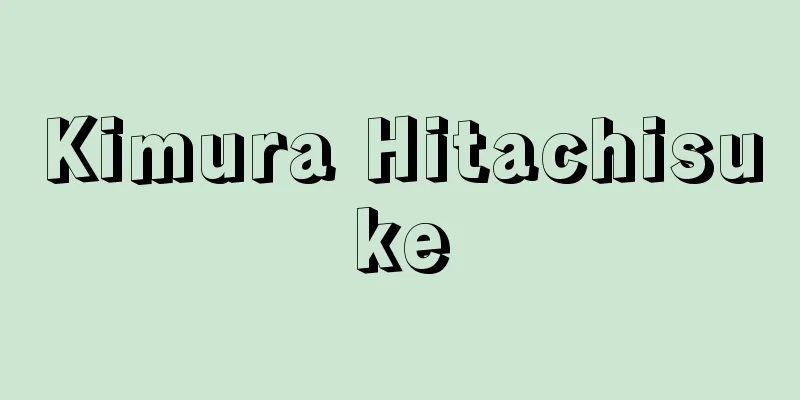Exercise Therapy

|
Exercise therapy is another fundamental part of diabetes treatment. Along with diet therapy, exercise improves the balance between energy intake and expenditure, and also improves the functioning of insulin. Appropriate exercise helps glucose enter muscle cells, lowering blood sugar levels and improving high blood pressure and dyslipidemia. As a result, it helps prevent arteriosclerosis. Before starting exercise therapyBefore starting exercise therapy, it is necessary to consult with your doctor. If your blood sugar level is extremely high, your blood sugar level may rise after exercise. If you have cardiopulmonary disease or have ongoing complications, it is best to limit your exercise. Regarding nerve damage, if it is severe it is better to limit movement, but if it is only mild peripheral neuropathy there is no problem. Type of exerciseIf exercise therapy is permitted, it is recommended that the exercises to be performed are those that can be done alone, anytime and anywhere as part of daily life. There are two types of exercise: aerobic exercise, which is performed sustainedly while taking in oxygen, and resistance exercise. Aerobic exercise is full-body exercise such as walking, jogging, and swimming, but if you have orthopedic disease that causes problems in your legs or back, we recommend water walking, cycling, and exercise while sitting in a chair. If you continue doing this, your blood sugar level will go down and you will be able to lose weight more easily. On the other hand, resistance exercise is repetitive exercise using abdominal exercises, squats, and strength training machines (so-called muscle training), and if done intensely, it is classified as anaerobic exercise. It is expected to increase muscle mass and strength, and since muscles take in glucose, it helps lower blood sugar levels. In addition, underwater walking is a combination of aerobic and resistance exercise, which puts less strain on the knees and is recommended for overweight diabetic patients. Intensity of exerciseExercise should be at a level that feels slightly strenuous or less. Using your pulse rate as a guide, your pulse rate should be 100-120 beats per minute or less if you are under 50 years old, and 100 beats per minute or less if you are over 50 years old. The procedure is to start with light exercise and gradually increase it. It is practical to increase the amount of exercise in your daily life. For example, you can increase the time you spend doing housework, walk as much as possible when commuting to work, or use the stairs instead of the elevator. If your dog is not getting enough exercise, try going for walks regularly. Once your dog gets used to it, try walking a little faster (walking or brisk walking). Exercise timeTo burn fat and improve your metabolism, you should aim for a total of 20-60 minutes of aerobic exercise per day, at least three times a week, and, if possible, resistance exercise two to three times a week. Using a pedometer is also a good idea. Aim for 7,000 steps a day, and 10,000 if possible. Recently, calorie counters that show the amount of energy consumed have become available on the market, so aim for 200 kM3 or more. Table 14 shows the approximate amount of energy consumed by various types of exercise, and you can see that the amount is surprisingly not that much. Other points to noteIf you are taking insulin or other diabetes medication, be aware that there are times when you are more likely to experience hypoglycemia. When exercising, be sure to carry glucose, sugar, biscuits, juice, etc. with you to prevent hypoglycemia. Also, eat snacks before, during, or after exercise depending on the amount of exercise you are doing. In addition, it is important to choose clothing and shoes suitable for exercise, and check before and after exercise to see if any blisters occur (foot care). "> Table 14 Exercises and time required to burn 100k (... Source: Houken “Sixth Edition Family Medicine Encyclopedia” Information about the Sixth Edition Family Medicine Encyclopedia |
|
運動療法は、糖尿病治療のもうひとつの基本です。運動には、食事療法とともにエネルギーの摂取・消費のバランスを改善するとともに、インスリンのはたらきをよくする効果があります。 適切な運動は、ブドウ糖が筋肉の細胞内に入って血糖値を低下させるとともに、高血圧、脂質異常症も改善する効果があります。結果として動脈硬化を予防し、 運動療法を始める前に運動療法を始めるにあたっては、主治医と相談することが必要です。血糖値が極端に高い場合は、運動後にかえって血糖値が上がる場合があります。 心肺疾患を合併している場合や、合併症が進行している場合は運動を制限したほうがよいでしょう。とくに、狭心症や心筋梗塞を合併している場合、 神経障害については、高度であれば運動を制限したほうがよいのですが、軽度の末梢神経障害であればさしつかえありません。 運動の種目運動療法が許可された場合、実際に行う運動としては、日常生活のなかで、いつでもどこでも一人でもできる運動がすすめられます。 運動の種類としては、酸素を取り入れながら持続的に行う有酸素運動とレジスタンス運動があります。 有酸素運動は歩行(ウォーキング)、ジョギング、水泳などの全身運動ですが、整形外科的疾患で足や腰が悪い場合は、水中ウォーキング、自転車、椅子に座っての運動などがおすすめです。継続して行えば、血糖値が下がり減量しやすくなります。 一方、レジスタンス運動は腹筋、スクワットや筋力トレーニングマシンによる反復動作(いわゆる、筋トレ)で、強く行えば無酸素運動に分類されます。筋肉量や筋力を増加させることが期待され、筋肉はブドウ糖を取り込むので血糖値が下がりやすくなります。なお、水中ウォーキングは有酸素運動に加えてレジスタンス運動がミックスされた運動であり、膝にかかる負担が少なく、体重が多い糖尿病患者さんにおすすめです。 運動の強さややきついと感じる程度以下の運動とします。脈拍を目安にして、50歳未満では毎分100~120拍以下、50歳以降は毎分100拍以下とします。 手順としては、軽い運動から始めて徐々に増やすようにします。日常生活のなかで運動量を増やすのが実際的です。たとえば、家事の時間を増やしたり、通勤の時になるべく歩いたり、エレベーターをやめて階段を使ったりするとよいでしょう。 そのうえで、運動が不足している場合には、散歩などを定期的に行うようにします。慣れてきたら、少し速く歩くようにします(ウォーキングあるいは速歩)。 運動の時間脂肪を燃焼させて代謝を改善させるためには、有酸素運動を1日合計20~60分、週に3回以上行うことが望まれます。可能であれば、週に2~3回のレジスタンス運動も行います。 歩数計を使用するのもよい方法です。1日7000歩、できれば1万歩を目標にします。最近は消費エネルギーが出るカロリー・カウンターも市販されているので、200k㎈以上を目標にします。 いろいろな運動の消費エネルギーの目安は表14に示すとおりですが、意外に多くないことがわかります。 その他の注意点インスリンや糖尿病ののみ薬を服用している場合、低血糖になりやすい時間帯があるので注意します。運動する時は低血糖の用心のため、ブドウ糖、砂糖、ビスケット、ジュースなどを必ず携帯するようにします。また、運動量に合わせて、運動前後あるいは運動中に補食をとるようにします。 さらに、運動に適した衣服、靴を選び、運動前後で靴ずれなどが生じていないかをチェックすること(フットケア)も重要です。 "> 表14 100kを消費する運動と時間(… 出典 法研「六訂版 家庭医学大全科」六訂版 家庭医学大全科について 情報 |
<<: Yunnan [Province] - Yunnan
Recommend
African Darter Frog
...The Hylidae family includes poisonous species ...
airport surveillance radar
...A radio station that combines the functions of...
Program music (English)
A musical piece is an instrumental or ensemble pi...
Mesosphere (English spelling)
The atmospheric layer above the stratosphere and b...
Stroganov family - Stroganov-ke (English spelling) Stroganovy
A wealthy Russian merchant and industrialist famil...
Hideo Ono - Onohideo
A pioneer in Japanese journalism research. Born o...
Christian Fürchtegott Gellert
1715‐69 German novelist. Born the son of a pastor ...
Deterding - Sir Henri Wilhelm August Deterding
A businessman born in the Netherlands and natural...
Ishiyama Gobo
…In 89 (Entoku 1), Rennyo handed over temple affa...
Dipole - Dipole
Consider a pair of two monopoles, +q and -q, of e...
Kalki (mythology) - Karuki
…In the Puranas, the mythology of Vishnu's in...
Amynodon (English spelling)
An extinct mammal related to the rhinoceros. It wa...
Sexual anesthesia
This condition is generally used to describe wome...
Whole Earth Catalog
...In addition, with the recent development of el...
St. Mark's Basilica - St. Mark's Basilica (English spelling)
A Byzantine-Romanesque cathedral representing Veni...








![Oshima [village] - Oshima](/upload/images/67cb159c97b86.webp)
